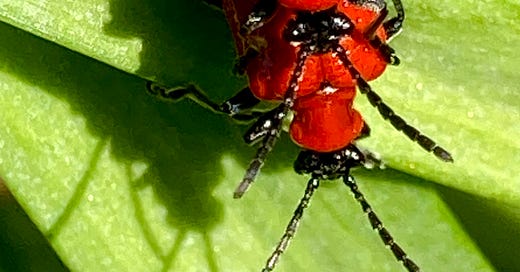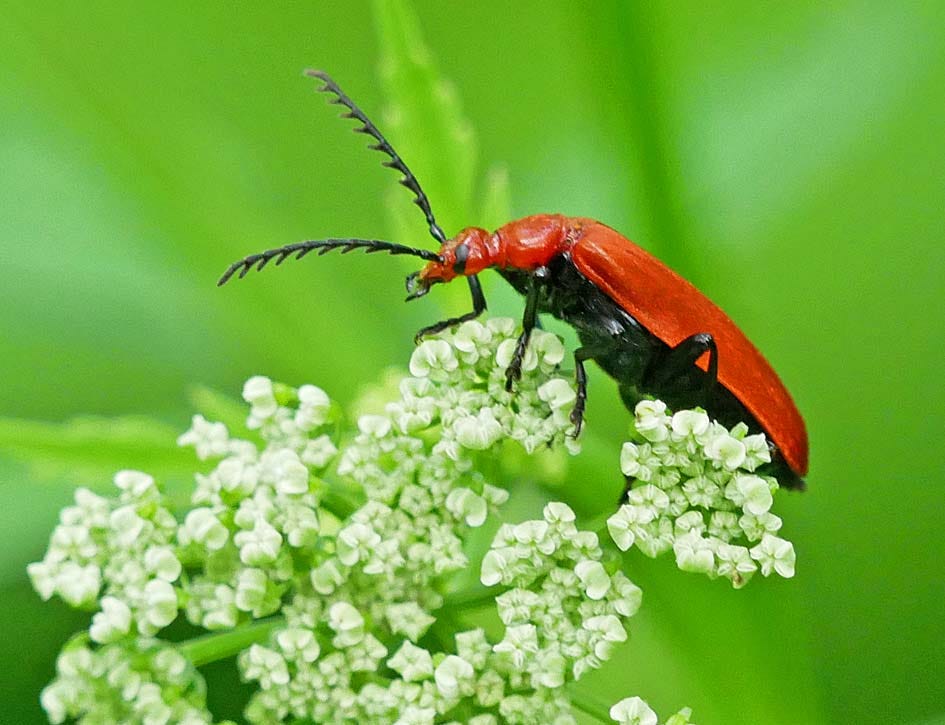These scarlet lily beetles Lilioceris lilii were mating on the leaves of a snake’shead fritillary in the garden yesterday. They can be very destructive insects, with adults and larvae feeding on the foliage of ornamental lilies and fritillaries.
These colourful beetles, native to Eurasia, first appeared in our Country Durham garden seven years ago, although they first became firmly established in a garden in Surrey in 1938. Their range has extended northwards ever since and now scarlet lily beetles have been found in every English county. Their colour makes them easy to spot but they are tricky to catch, dropping off the plant at the slightest disturbance and landing upside-down in the soil where their dark underside makes they harder to find.
They lay their sticky eggs on the underside of foliage, hatching into grubs that can quickly chew their way through soft leaves.
They grow rapidly, covering themselves in their own excreta. It’s possible that they do this to deter parasitic wasps, but its something of a messy deterrent to a gardener too if plan to handle them.
I’ve caught and removed adults beetles every year but they still turn up in April, just as the fritillaries come into flower. They spend the winter in the leaf litter but are strong fliers on warm spring days, so even if all were removed from a garden more would surely arrive. Despite their presence the population of snake’shead fritillaries in my garden slowly increases very year, so perhaps beetle and host plant can coexist, although it’s understandable that dedicated lily growers might want to kill every scarlet beetle they see.
The danger is that the pest is often mistaken for this, the native cardinal beetle Pyrochroa serraticornis, which is perfectly harmless to garden plants and feeds on other insects. So, before you swat or squash, check out the key differences. If it has little pits over it’s wing cases and antennae like a string of beads its scarlet lily beetle; if it has smooth wing cases and saw-tooth antennae it’s an innocent cardinal beetle.











This is excellent timing Phil! I just posted a pic on my notes today checking what the little red beetle I'd found was - I think it's the latter 😅